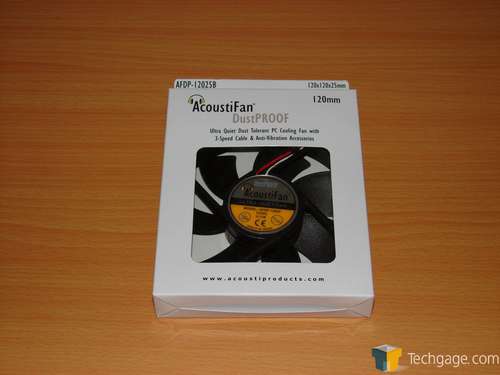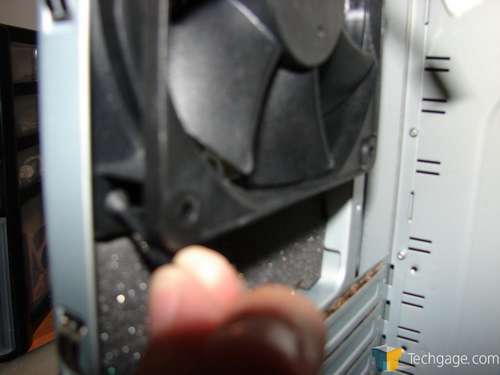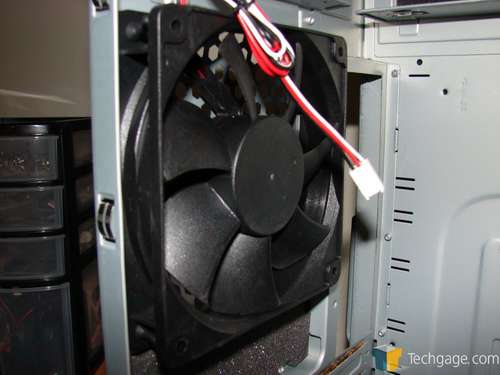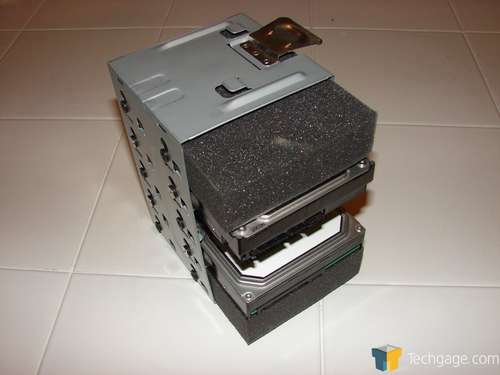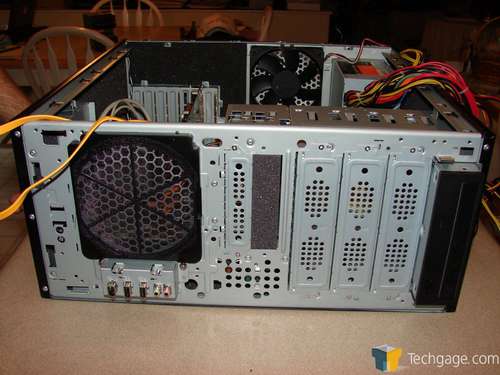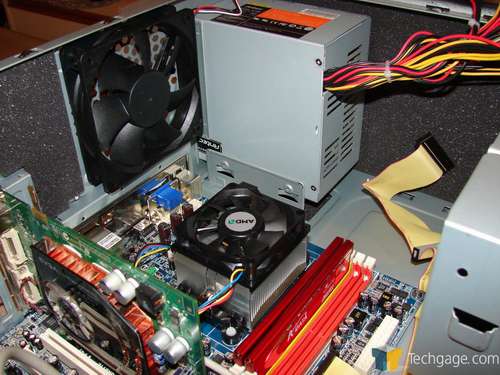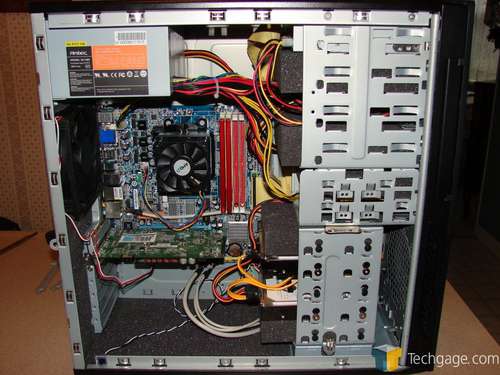- Qualcomm Launches Snapdragon 4 Gen 2 Mobile Platform
- AMD Launches Ryzen PRO 7000 Series Mobile & Desktop Platform
- Intel Launches Sleek Single-Slot Arc Pro A60 Workstation Graphics Card
- NVIDIA Announces Latest Ada Lovelace Additions: GeForce RTX 4060 Ti & RTX 4060
- Maxon Redshift With AMD Radeon GPU Rendering Support Now Available
AcoustiProducts AcoustiCase 340
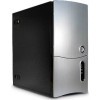
If you’re not into silent PCs, then the AcoustiCase 340 probably isn’t for you. If that comment piques your interest, read on and find out why this case is a good choice for those who have the goal of reducing the noise output of their PC. We put it to the test, both thermally and sonically.
Page 4 – Building a System
To test the AcoustiCase’s ability to ‘silence’ components, we didn’t select any silent cooling components to build the test system. Instead, we simply swapped in a test system based around some components we had on hand, among them a Gigabyte Micro ATX motherboard and an AMD Athlon BE-2300 with its stock heatsink/fan.
The test system originally lived in an Antec SLK3700, but right away we noticed the striking similarity with the AcoustiCase. The hard drive cage from the Antec SLK3700 fit directly into the AcoustiCase 340, and the stamped fan grilles looked virtually identical. The only differences appear to be that the AcoustiCase uses thinner steel (0.6mm instead of 0.8mm) and doesn’t have the same cross-brace that the Antec case has. Later on, we’ll compare the thermal performance of the AcoustiCase 340 to that of the same system in the SLK3700, to see what the effect of all that foam really is. For now, however, let’s take a look at the process of building a system in the AcoustiCase.
QuietPC USA also sent along an AcoustiFan “Dustproof” case fan. “Dustproof” refers to the way that this sleeve-bearing fan features additional internal seals to keep dust from mixing with the lubricant and congealing, which would otherwise shorten the fan’s life span. (In an upcoming article on silent PCs, we’ll take a look at why sleeve bearings are making a comeback.) The fan itself is based on a Globe Fan 120mm chassis (merely re-branded “AcoustiFan”) with a 3-pin power connector, and moves 56.3 CFM at 1500 RPM and 24.7 dBa.
The AcoustiFan package included a set of four elastomer fan mounts, which enable the fan to be mounted without transferring its vibration to the chassis. Installing these grommets was a delicate operation, yet no tools were required. First, each grommet had to be individually threaded through the fan mounting holes in the case. Then, each grommet had to be individually pulled through the fan frame. While we worried we might stretch the grommets too far and break them, they held up to the strain.
Next, we set about transferring the hard drives from the SLK’s drive cage to the 340’s. Now, as you’ll recall, hard drives produce heat, so it’s not so simple as sticking the hard drives into any open slot. One side of each drive will be adjacent to a block of foam – so it’s important to make sure each drive will receive some airflow, at least. We elected to go with the placement shown in the photo – with a tunnel through the center to conduct airflow between the two drives. We wish we could have mounted the top drive upside down, so the airflow could still be passing over the ‘top’ of each drive, but such luck was not to be had.
While we typically discard front filters because they restrict airflow and hurt more than they help when it comes to thermal performance, the filter on the AcoustiCase appears to be a legit wire mesh, instead of the perforated plastic we’ve seen on other cases (like Antec’s SOLO.) In order for a front filter to work well, there must be no other paths of air intake – but here, the entire front panel is perforated. We threw up our hands in disgust and left it the way it was.
Next, we installed the motherboard and expansion cards. The motherboard is only a MicroATX motherboard, but we see no reason why a full ATX board couldn’t fit comfortably in this case. We borrowed a vented expansion slot cover from an Antec NSK2400 case to improve ventilation near the video card itself; we’re surprised nobody is selling these expansion slot covers a-la-carte.
Finally, with everything in place, we routed the cables – an easy task thanks to the AcoustiCase’s copious amounts of internal space. With everything in and wired up, we closed up the case and admired our handiwork. Rapping on the side, we noticed that the sound was dull and greatly attenuated, a promising sign for the case’s acoustic performance.
Next, let’s move on to the testing results and some additional subjective impressions.
|
|
Support our efforts! With ad revenue at an all-time low for written websites, we're relying more than ever on reader support to help us continue putting so much effort into this type of content. You can support us by becoming a Patron, or by using our Amazon shopping affiliate links listed through our articles. Thanks for your support!




